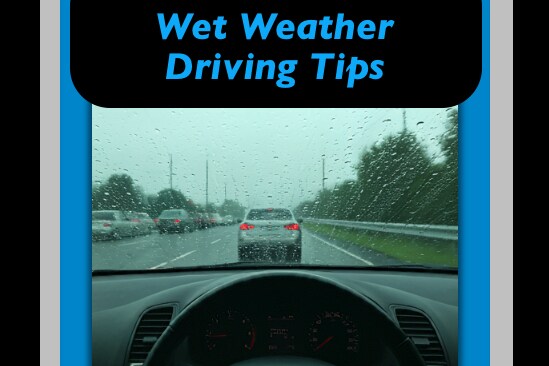
With increased precipitation comes trickier road conditions for us all, and for the younger, less inexperienced drivers among us, it can test skill, instincts, and patience. Let’s look at some basics of piloting a vehicle in inclement weather that even the most confident of rally racers would adhere to.
Check Your Tires
Before even venturing out into the maelstrom, ensure your tires are properly inflated and have adequate tread depth. We often say something that seems self-evident, but it’s because it’s just as often overlooked: This is your contact with the road, your tires’ ability to maintain grip is what allows your engine to deliver its acceleration, your brakes to stop short of obstacles, and your steering input to be followed accordingly. The grooves and sipes in your tire’s tread pattern are there to eliminate debris and liquid, so as they wear away the efficiency of water displacement drops as well. If you’re traveling faster than the tires can expel the water you’ll begin to hydroplane, meaning you’re no longer in control of your vehicle. Unless you…
Slow Down
When possible, it’s best to plan ahead and factor in additional time for your commute when weather’s involved. Impatience can be a trap, causing you to push your vehicle beyond its limits, and with traffic slowing down in general it can only exacerbate your stress when you’re already in a hurry. Again, don’t outrun your tires’ ability to shed water, and do not forget that your braking time will be extended as well, as a matter of fact, it’s a good idea to…
Increase Following Distance
Even if you have the reaction time of an F1 driver, the uncertainty of the roads should give you pause, along with the potential safety and financial repercussions of rear-ending the car ahead of you. Giving extra space further allows more reaction time in the cases of decreased visibility, as the unseen traffic ahead could contain hazards you simply won’t be aware of until you’re upon them. In regards to poor visibility…
Use Your Headlights
Headlights aren’t always for you to be able to see, they also help the people you’re sharing the road with to be able to see YOU. Especially when the rain is outrunning your windshield wipers, the lights of the vehicles around you are vital for maintaining spacial awareness and what’s going on around you. Even if your car already has daytime running lights, be sure to go ahead and completely turn all the lights on, as, depending on the vehicle, your tail lights may not be lit.
We’ve previously covered ways to overcome hydroplaning, which is worth checking out if you’d like to go more in-depth on the subject, but the gist is clearly to take it easy on the roads when the weather turns. Even drizzling rain can present issues, as it can push the oil and debris that’s been sitting in the depressions, cracks, and pits of the streets to come up to the surface. The name of the game is to keep your tires attached to the road, and with good tires mixed with patience, you should see your way through plenty of safe travels. Take care out there!